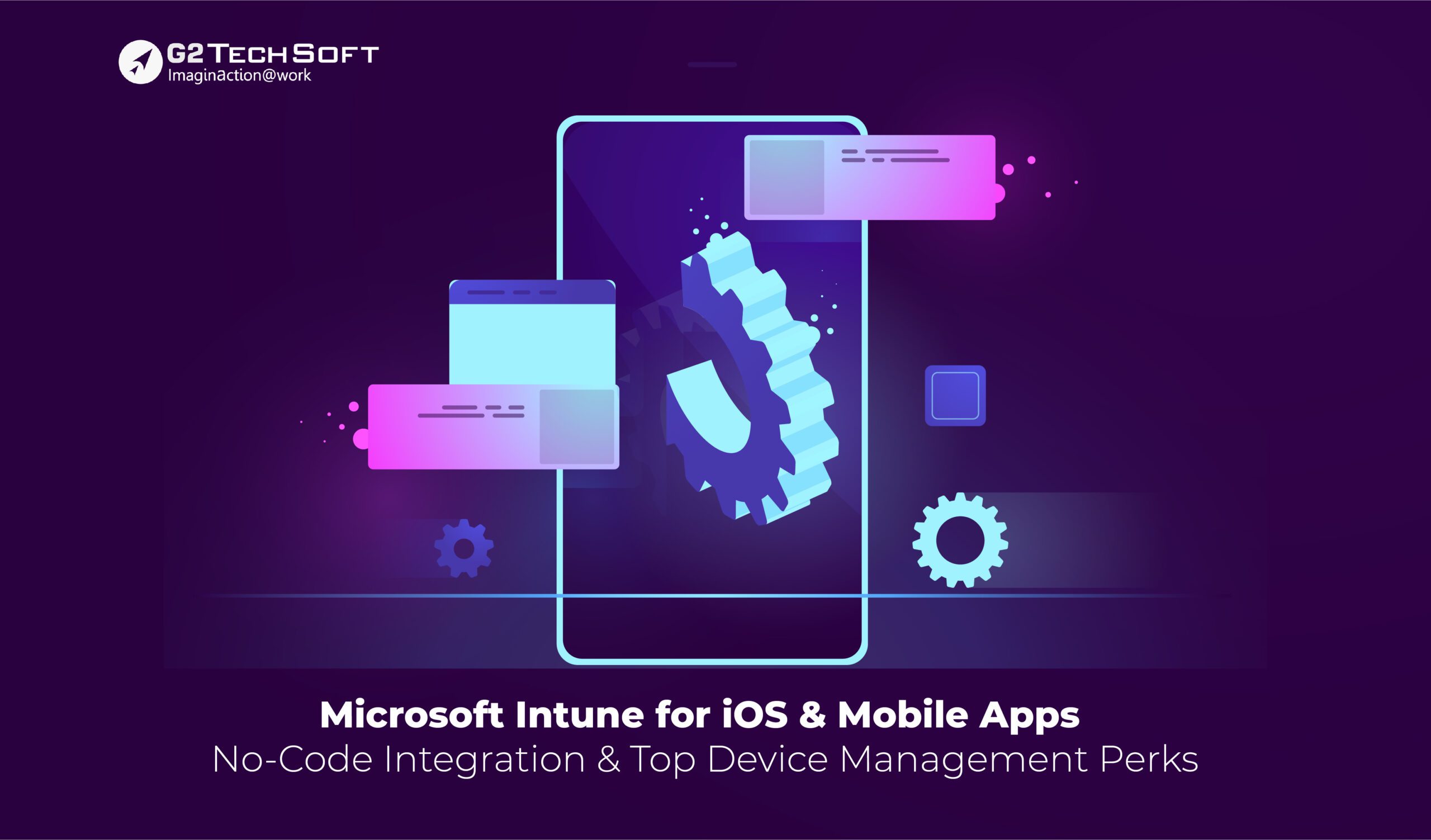
4 Essential Ideals Of Responsive Web App Development
In today’s digital age, dominated by mobile devices, the significance of responsive design in web application development cannot be overstated. Gone are the days of exclusive desktop usage; users now demand seamless experiences across various devices. Responsive web design has emerged as the linchpin for crafting adaptable and user-centric web applications.
Responsive web design is the keystone in the evolution of web development, ensuring that websites and web applications adapt gracefully to the myriad screen sizes and resolutions prevalent in the mobile landscape. In the realm of web and app development, the responsiveness of a website has become synonymous with user-centricity and adaptability.
This blog will explore the four essential ideas of responsive web app development, emphasizing its transformative impact on the user experience and the success of web projects.
Diverse Types Of Responsive Web Applications:
Mobile-First Responsive Design:
Embracing a mobile-first design strategy will entail creating web applications optimized for mobile devices, with subsequent adjustments for larger screens. Although widely adopted, it may lead to a less-than-optimal experience on larger screens, often feeling clunky and slow. For projects with sufficient resources, exploring the creation of distinct desktop and mobile versions could be a more tailored approach.
Desktop-First Responsive Design:
In contrast, a desktop-first design prioritizes the development of web applications for larger screens, later adapting them for smaller devices. Employed by responsive design libraries such as Bootstrap, this approach will tend to yield a site that feels fast and responsive across all devices. However, its implementation can be more intricate, especially for those new to web development.
Fixed-Width Responsive Web Design:
This type of responsive design will permit customization based on the viewing device. From navigation menus to font sizes, every element adjusts according to whether the user is on a desktop computer or a mobile device. Despite its flexibility, managing this approach can be challenging, requiring customization for each page based on the specific device used by the visitor.
Mobile Subdomains:
Diverging from the conventional single domain, mobile subdomains involve having two separate domain names—one for mobile devices and another for desktop computers. This approach will prove beneficial when the goal is to create distinct, optimized versions of the website tailored to each device type. It provides a method for customizing the user experience based on the device accessing the website.
4 Core Steps To Seamless Responsive Design Implementation:
Selecting The Appropriate Development Tools:
The process of developing responsive web applications will involve a nuanced selection of tools, considering the diverse landscape of libraries and frameworks available. Libraries, comprised of CSS or JavaScript code snippets, tackle specific tasks like responsive grids and navigation menus.
In contrast, frameworks provide comprehensive UI elements, facilitating the efficient creation of responsive web applications. Popular choices such as Tailwind CSS, Ant Design, Bootstrap, Pure CSS, and Bulma offer varying advantages.
When making tool choices, factors such as browser support, design uniqueness, project scale, library or framework size, team expertise, customization possibilities, and the desired level of control should all be taken into account. The ultimate aim is to align the chosen tools with the project’s distinct requirements and constraints.
Crafting An Effective Layout:
At the heart of a responsive web application lies its layout, which determines the spatial arrangement of crucial elements such as navigation bars, logos, sidebars, and main content.
Leveraging the Bootstrap framework for CSS, a responsive layout is meticulously structured by sequentially adding components like headers, sidebars, and main content blocks.
Despite Bootstrap’s lack of pre-made components explicitly designed for layout creation, its flexibility allows developers to achieve the desired structure. A well-defined layout not only enhances visual appeal but is pivotal in delivering an optimal user experience across a spectrum of devices.
Configuring Element Responsiveness:
The realm of responsive web application development will introduce pivotal elements such as breakpoints and grids, and tools like Bootstrap provide essential features to leverage these elements effectively.
Breakpoints, aligned with average screen sizes, act as triggers for adjusting the application’s appearance through media queries. Bootstrap simplifies this process by offering pre-made CSS classes that align with different breakpoints, facilitating responsive behavior.
Sass mixins within Bootstrap empower developers to create custom media queries tailored to the project’s needs. The 12-column grid system based on Flexbox in Bootstrap further enhances the flexibility and responsiveness of user interfaces, allowing developers to create visually appealing and adaptable web applications.
Testing Responsive Design:
The testing phase is critical to ensuring that a web application adapts seamlessly to a diverse array of screens, providing a correct display and optimal readability. While manual resizing of the browser window is one method, modern browsers offer dedicated tools for more efficient testing.
Features like Responsive Design Mode in Firefox and the Toggle device toolbar in Google Chrome simulate various screen sizes, allowing developers to assess the responsiveness of their designs. It will be mandatory to acknowledge the limitations of these tools—they primarily set viewport sizes and user agents but do not fully emulate the intricacies of different devices.
For a comprehensive evaluation, real devices or virtualization services like Sauce Labs and BrowserStack are recommended, providing a more accurate assessment of a web application’s performance on a variety of devices.
Transformative Significance Of Responsive Web Application Development:
Responsive websites are designed to adapt seamlessly to distinct devices and platforms, including desktop computers, mobile phones, and tablets. The paramount advantage lies in the creation of a consistent and visually uniform experience for users across all platforms, fostering higher levels of customer satisfaction.
The significance of responsive web application development extends beyond mere aesthetics, proving indispensable for both businesses and individuals. It will permit broader audience outreach, catering to diverse needs without concerns about device compatibility issues commonly encountered in conventional web development services.
Embracing Responsive Website Development Yields Several Compelling Advantages:
Reduced Bounce Rate:
Responsive websites mitigate bounce rates, which denote the number of single-page visits before visitors exit the site without engagement. By ensuring compatibility across devices, responsive designs eliminate obstacles related to navigation and slow loading times. This enhanced user experience encourages mobile users to navigate effortlessly through the site, reducing bounce rates.
Increased Conversion Rate:
A responsive design enhances the overall user experience compared to non-responsive counterparts, contributing to a higher conversion rate. This improved user engagement encourages visitors to click on links or make purchases from eCommerce stores, ultimately leading to increased revenue generation.
Enhanced User Engagement:
The user-friendliness of a responsive design fosters increased user engagement. A website that seamlessly adapts to different devices ensures a positive experience, attracting more customers and boosting sales over the long term.
Improved Website Rankings:
Responsive designs will positively impact website rankings on search engines like Google and Bing. Being mobile-friendly increases visibility for users accessing the site via smartphones or tablets, thereby amplifying organic traffic and potential sales from search engine results.
Key Takeaways:
The integration of responsive web application design and development is instrumental in enhancing user satisfaction across varied devices. This approach ensures ease of use and accessibility, allowing an application to seamlessly adapt its content to the screen dimensions of users, thereby facilitating convenient reading and interaction.
The task of selecting the appropriate tools for achieving adaptability in an application may initially appear daunting due to the myriad of approaches, libraries, and frameworks available. However, investing time in meticulous tool selection is crucial, as errors at the planning stage can have substantial implications for budget constraints and compromise the overall quality of the product.
Careful consideration of these tools during the initial stages of web application development is paramount for a successful and user-friendly end product.
Looking To Improve The Reality Of Web App Development? Choose G2 TechSoft
In the pursuit of elevating your web app development endeavors, G2 TechSoft emerges as the optimal choice. As a leading player in the field, G2 TechSoft brings a wealth of expertise and innovative solutions to augment your development projects.
Whether you are aiming to enhance functionality, streamline the user experience, or incorporate cutting-edge features, G2 TechSoft stands as a reliable partner. Our commitment to excellence and proven track record make them the go-to option for those looking to propel their web app development initiatives to new heights. Choose G2 TechSoft for a seamless and empowered journey in advancing your web app development landscape.




